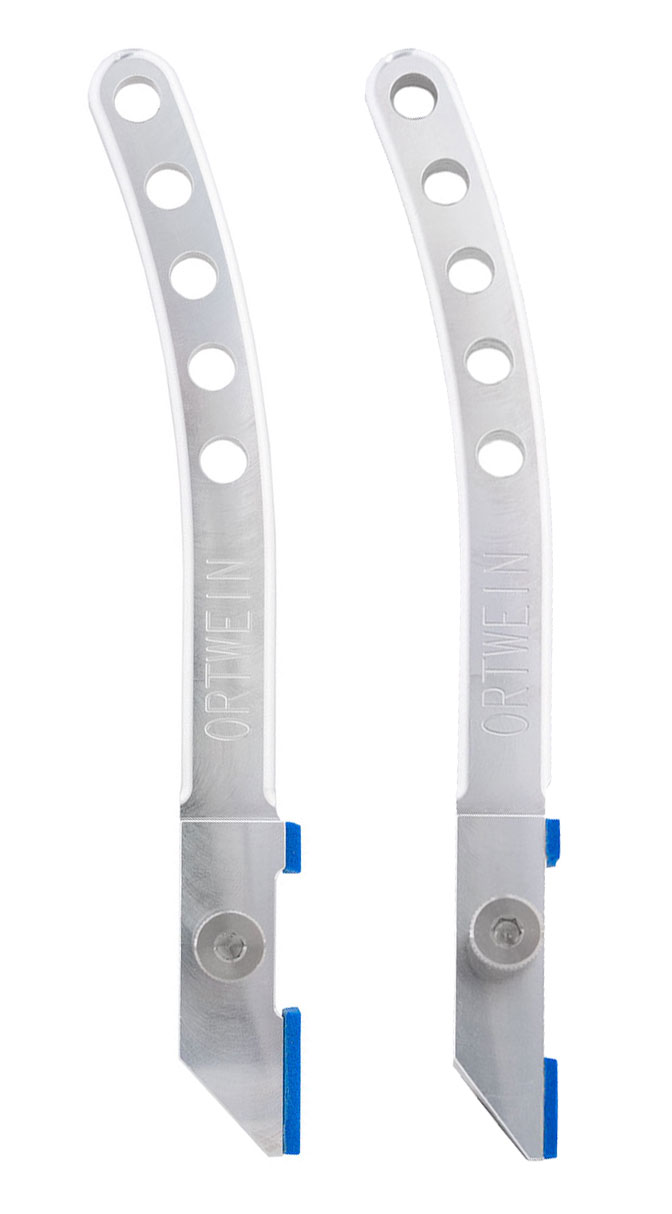Ortwein Balance Hangers for Bassoon
Posted by K.C. Chai, DMA on Apr 9th 2019

I'll let you in on an open secret: I do most of my practicing these days standing up. My masters degree teacher, Dr. Christin Schillinger, at the time teaching at the University of Nevada, Reno, really pushed me to consider playing and practicing standing up. She said I would breathe better. She said it would help my stage presence when giving recitals. She said eventually I'd come to like playing standing. I fought her a little on this issue. Oh, how that mighty opinion has fallen! Alas, she was right. She IS right. I breathe deeper. I have better air support (when compared to sitting). And I do now prefer to play standing. It was even at my suggestion when, during my doctorate, my woodwind quintet performed standing.
But playing the bassoon standing is even more awkward at first than to play seated. Why? The body of the bassoon passes in front of, or near, the face. The weight is distributed unevenly onto the left hand. You need the bassoon just far enough away from the body but not too far or too close, to free up your right hand. And then there's the neck strap that is often a bassoonist's first clue that standing (or, even worse, marching) might be a thing.
There is now a great many more options to support the bassoon than even 20 years ago. But that is another discussion. Is there any way to reduce the awkwardness of the bassoon's weight to make standing and playing easier?
Why yes, yes there is. It's called a balance hanger. It attaches to the bassoon at the boot joint, and it has several holes, allowing a great deal of customization for finding your perfect fit. That fit is found, ideally, when using the support of your choice, and hooking it through one of those holes such that, with no hands supporting it, the bassoon hangs and balances horizontally and is level to the ground. When the bassoon balances evenly, the weight distribution when playing is reduced from the left hand, and it gives you more weight to push against with your right hand.
By comparison, this opens up worlds of possibilities for your music making because you can move more freely, allowing for more physical expression, there is less weight on your left hand, you can use your wind more freely and/or forcefully, and you can simply be more comfortable.
My bassoon didn't come with a balance hanger. Can I still use one? Or do I need to buy a different bassoon?
Yes, a balance hanger is still an option. No, you do not need to buy a different bassoon. Different bassoon makers frequently supply a balance hanger with a new bassoon purchase, but this is often reserved for professional models. It is also not often apparent if one of these balance hangers can work on a different make of bassoon. Reasons for this include the position of the neck strap ring, the size of the ring, the width of the ring, and possibly other variables. Read on to see what the other options are.
What do I need to know to find a balance hanger?
One of the newest balance hangers to the market is made by professional bassoonist and saxophonist Mark Ortwein. I was lucky to meet him some years ago when he gave a reed-making masterclass during my DMA program at the University of Nevada, Las Vegas. He makes a few high quality and very specific bassoon products: a bassoon reamer, a contrabassoon reamer, a high A to whisper key bridge that doubles as an alternate low C# key allowing a low C#/D# trill, and balance hangers.
So, what's so special about the Ortwein Balance Hangers? First, there is no additional hole to drill into your bassoon. This means no trip to a bassoon repair tech specialist, no additional cost for installation, and no need to fly somewhere or ship your bassoon just to install a hanger. Second, as mentioned just now, there is no additional expense after purchase. Third, the price is less than what I paid for, with a previous bassoon, to buy a Fox balance hanger without the installation. And cost is always a factor.
Beyond cost, the Ortwein Balance Hangers are almost, if not quite fully, universal. He makes one model for Fox bassoons, which might fit a few other lesser known makes, and a model for Heckel bassoons, which also fits Moosmann bassoons and some of the other major makers. The distinction between them is size and thickness of the neck strap ring. See the following picture. We have learned, sadly, that neither hanger is likely to work with Howarth bassoons.

The blue in the picture is the foam bumper which contacts with the bassoon. The holes in the picture are for the locking screw which is inserted on the other side, as shown in the following picture.

The point of this picture, above, is the thickness of the neck strap ring. On the Fox model, the space that receives the ring is 3mm wide, versus 2.5mm wide on the Heckel model. As pictured, there is some extra metal removed to also allow for a different proprietary design used by makers such as Moosmann.
So how does it work?
This is easy! Assemble your bassoon. Remove the locking screw from the balance hanger, fit the hanger over the neck strap ring, placing the foam bumper snug against the bassoon, and return the locking screw in place, screwing it in from the right-hand side. Put on your harness, sling, or neck strap, and clip into the hole that works best for you. Be sure the bassoon is as close to horizontal as it can be. Adjust your supporting device to put the bocal and reed at the right place to be able to play.
That's all there is to it! Practice as needed. Unhook your supporting device from the balance hanger when playing is completed. To disassemble, I remove my reed and bocal first, then my balance hanger, and then the rest of the bassoon, always swabbing the wing and boot joints, and maybe the bocal as well.
Can I use a balance hanger while seated?
Absolutely! While it is less common in my experience, there are big name players who like to use a balance hanger all the time. If you can position the bassoon comfortably, you can use it alone or in conjunction with a seat strap. Though not my preference, it is certainly an option.
Conclusion
That's basically it. That's really all you need to know to use a balance hanger. We at Hodge Products, Inc. stand fully behind the Ortwein Balance Hanger for bassoon as a great product! As the bassoon specialist, I use it personally. Please feel free to reach out to us if you have any further questions or concerns about this product or any others you may have been curious about. We are always happy to help!
